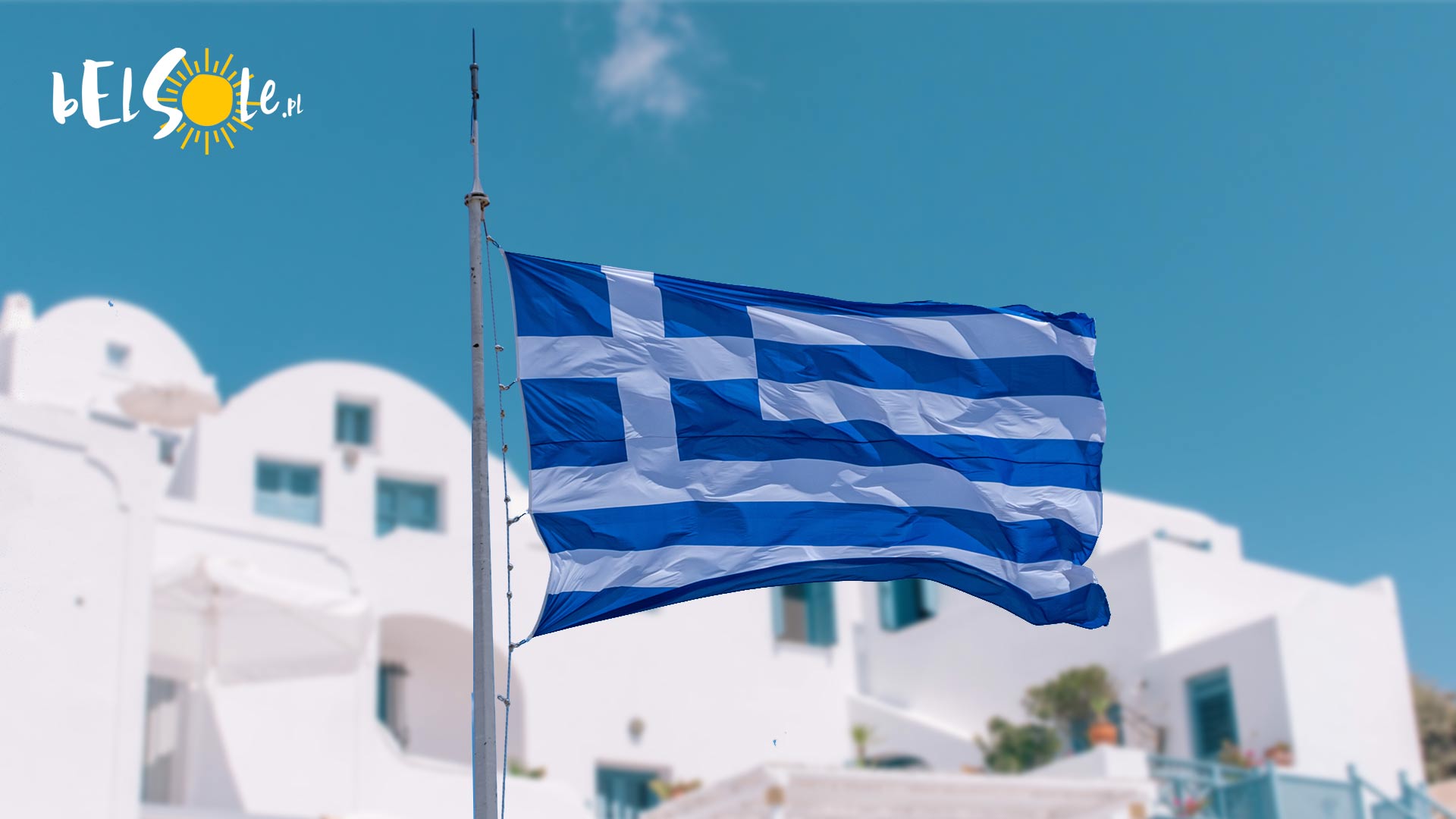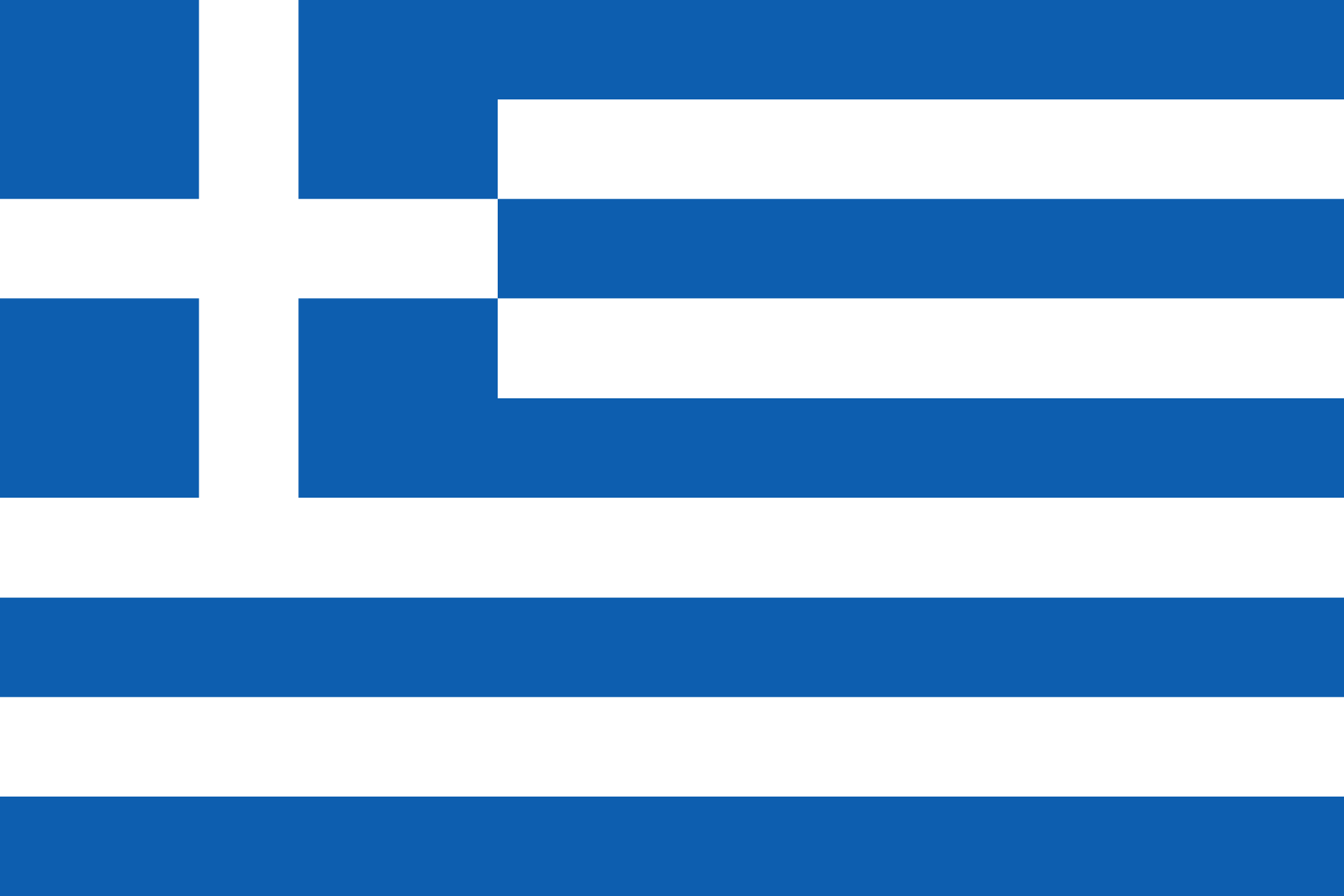The Greek flag is amongst the most popular symbols of Greece, with the blue being associated with the wondrous sea surrounding Greek coasts and the white with Greek houses. But that can’t be the actual intent, can it? What does the Greek flag really represent?
Flag of Greece
The Flag of Greece consists of nine horizontal stripes, alternating between blue and white. In the upper left corner, there’s a white cross on a blue backdrop. You’ll see the flag everywhere in Greece – all over public buildings, ferries, sometimes even on private balconies.
It’s interesting to note that the flag’s blue colour changed shades over its history, as people couldn’t agree on the right hue. There’s also no specified shade of blue which the flag has to have, so you may see a lot of different shades throughout Greece.
When was the flag of Greece created?
Ancient Greeks did not have an official ‘flag’ per se, nor did they use flags. Instead, different states had different symbols on their shields . It’s assumed that the first flag to appear on Greek territory was the Roman military banner. During the Byzantine and Ottoman periods, various flags were used, though they often used shades of red and more detail than the flag we know today.
During the Ottoman period in particular, Greeks utilised many various flags, including the one used by Greek sipahi cavalry in the 15-17th centuries. It featured a white backdrop with a light blue cross in the middle with St George in the middle of the cross slaying a dragon. Later, the blue cross on a white flag (or, sometimes, reversed) became a popular revolutionary flag in the 18th century, soon before the struggle for Greek independence.
The current layout of the flag was first proposed in 1822, as Greece was trying to distance itself from non-conventional locally governed states. Flags played a role in that process, as all revolutionary flags were abolished and one national flag was to be drafted. The Provisional Government proposed the current flag in March of 1822 as a naval flag and it became recognised internationally in 1828. For civil ensign, it proposed a blue cross on a white field, so the reversed revolutionary flag from earlier. The naval flag remained a naval flag until 1978, when it became the actual national flag. You can still see the old flag in Athens, at the Old Parliament building. That’s less than half a decade ago.
What does the flag of Greece mean?
The easiest thing we can point to is the cross – it represents Eastern Orthodox Christianity, the dominant religion of Greeks. And that’s all we can recognise for sure. There’s no official legend which explains the flag’s design. As we saw in the history of it, its rise to the national symbol wasn’t an ancient symbol being passed down from generation to generation but merely a mutation of one of many revolutionary flags which adorned Greece throughout the centuries. It simply fell on that because it did and even the Great Greek Encyclopedia from the 20th century says there’s much talk about how this flag came to be, all without much merit.
As such, we can only rely on popular interpretations. Of course, one of the most popular ones is that the white symbolises the sky and the blue the sea. The blue may also represent Eastern Orthodox Christianity, though, again, the blue can vary, so not all Greek flags can necessarily look the part.
Others have focused on the number of stripes, with one suggesting that these symbolise the 9 syllables of the phrase ‘Freedom or Death’ (like, in Greek: Elephtheria I Thanatos). This motto came to be during the war of independence against the Ottomans. Another is that it’s the nine letters of the Greek word ελευθερία, meaning freedom. It came from a revolutionary flag, after all.
A few fun facts
- the Greek flag is to be put up on public buildings from 8am to sunset. On certain holidays, the flag may remain on the flagpole throughout the night
- there are specific guidelines on how the flag is to be attached to the pole – it can’t, for instance, be attached to a balcony’s railing; you also can’t step on it, sit on it or let the flag touch the ground
- a used-up flag is not to be thrown in the bin – it should be destroyed, preferably by ceremonial fire
- the largest Greek flag is located on Zakynthos, on Cape Keri – it’s seriously massive, google it
See also:






